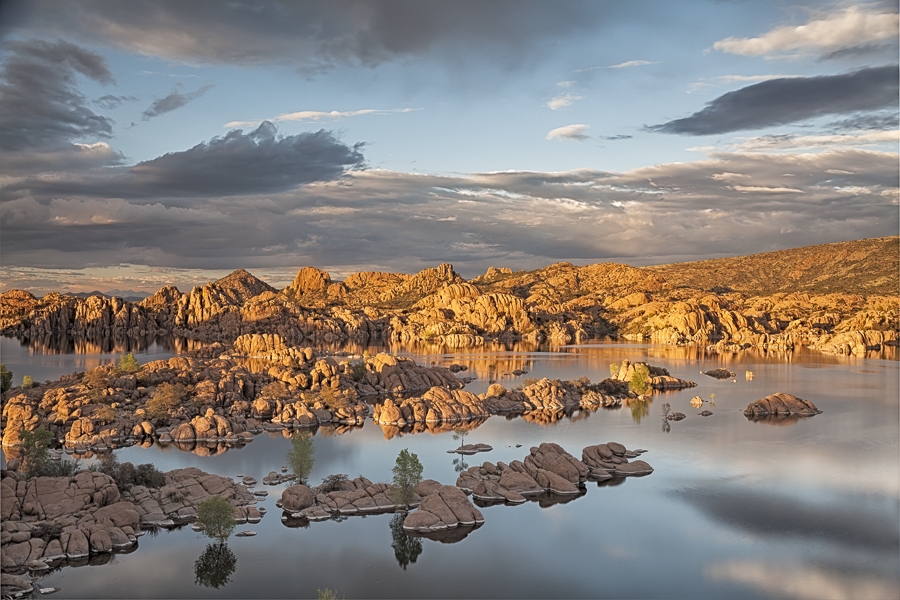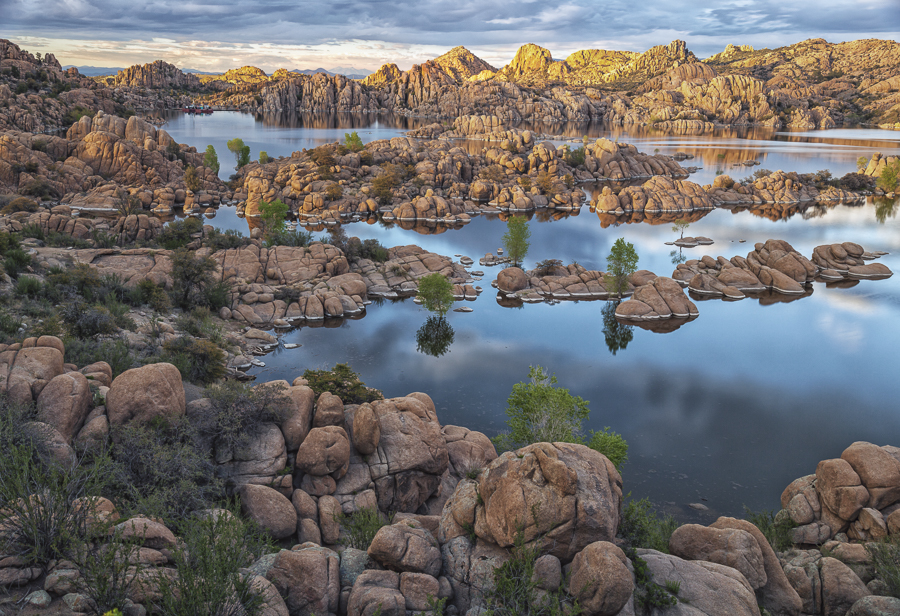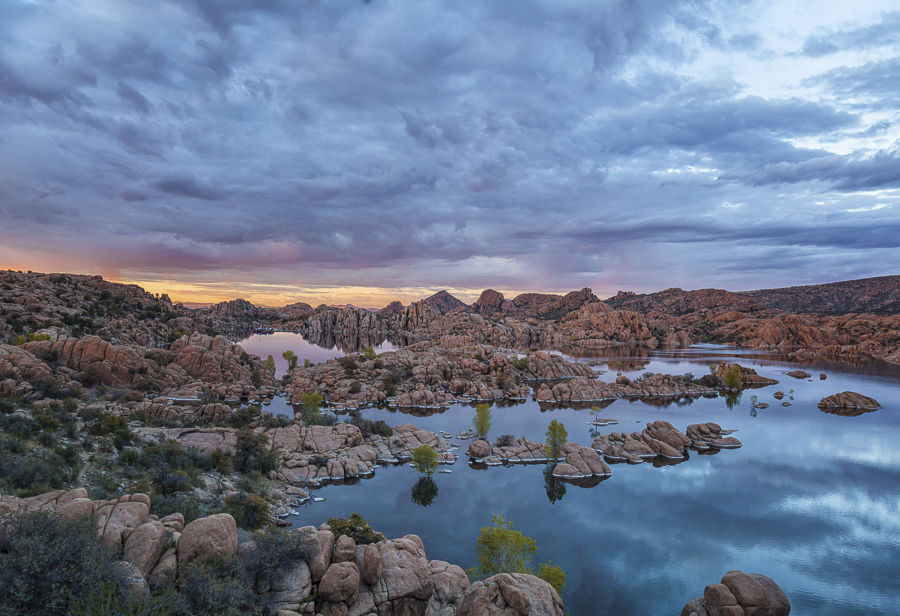Earlier this week, I went on a photo excursion that included two sites, the Town of Jerome and Watson Lake. I was accompanied by two friends and fellow photographers, Alex Skoczen and Paul Staley. Today, I will share photos from Watson Lake only and will devote a future post to our visit to Jerome.
Watson Lake is one of two reservoirs at the Granite Dells, in Prescott, Arizona. The lake was formed in the early 1900s when the Chino Valley Irrigation District built a dam on Granite Creek, flooding an area of the Granite Dells. The Granite Dells is an interesting geological feature . They consist of exposed bedrock and large boulders of granite that have eroded into an unusual lumpy, rippled appearance. It’s very unlike the geology seen elsewhere in the State.
The trip was planned to arrive at Watson Lake in time for sunset. We took our photographs from one location only, so today’s photos will all be similar. The salient difference among them is the time of day when each was shot, minutes apart. The sequence of photos I’ve included shows the dramatic changes in light that occur in a short period of time at sunset and the effect that this has upon the scene.
The first photograph was taken with the sun low in the sky, only 23 minutes before sunset. You can see that the foreground is in shadow while the opposite shore is still very much illuminated. The warm rays of the sun at this time of day bring a distinctly different colour to the rocks than seen earlier. I chose to do a long exposure, 6 seconds in this case. Cloud movement was very little, so I didn’t get a large effect on them. The water was relatively still but I was able to smooth it out further, using a 6-stop, neutral density filter to extend the exposure.

Just three minutes later, the sun had descended to a point when very little of the opposite shore remained illuminated. I zoomed in on the rocks for a better display of the detail and I extended the exposure to 13 seconds to further smooth the water. This is my favourite of today’s photos.

Lastly is a photograph taken very shortly after the sun had set. There is no more direct light upon the rocks or the lake. There is now a warm glow in the sky, created by reflected light from the sun’s position below the horizon. The rocks on the opposite side of the lake are coloured by the reflected light from the clouds. It’s a much faster exposure, so you can pick up a little rippling in the water and the clouds are much better defined.

We called it a day soon after sunset and left for home. It was an enjoyable and productive day.

Thanks for posting these, Peter. Striking images, well-composed. I particularly like the first – at early sunset, I would imagine. A great image, and testimony to taking photographs when the light is at its best.
Beautiful……cloud cover is quite spectacular!